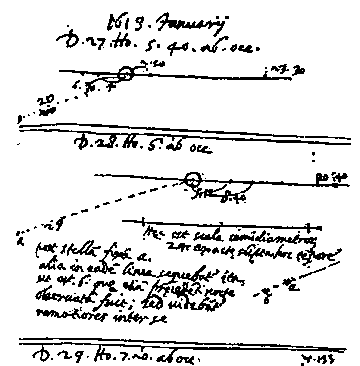stevei wrote:I am also skeptical that those dots are Jupiter's moons. Not only are they visible to the naked eye in the photo ...
Your statement makes no sense. A photo is a photo, not a naked eye view. And there's no reason for skepticism, as (1) capturing Jupiter's moons in a photo like this is not difficult at all - the only trick was finding our moon sufficiently dimmed by clouds to be in the same photo, and as (2) these are Jupiter and its moons, guaranteed - one of the sights in the sky that can't be mistaken for anything else.
geckzilla wrote:I was surprised to see Jupiter there at all considering there is a cloud in front of it.
Jupiter is very bright. You can see it through thin and not-so-thin solid cloud cover (and even light rain!), just as you can sometimes see the moon, the sun, and Venus through solid clouds (except maybe in NYC). Just kidding, you can see them in NYC too if you find a spot to get the lights out of your eyes.
Chris Peterson wrote:The Galilean moons of Jupiter are visible to the naked eye.
My eyesight (corrected by glasses) is only average, and in the proper skies I make an exercise of sighting Jupiter's moons with the naked (with glasses) eye. It's not exceedingly difficult to see a couple of moons. The same goes for daytime sightings of Venus at its maximum elongation from the sun; I have even seen it when the sun is higher than Venus - it's all in picking a good sky, knowing where to look, and looking carefully. You can see M31 through light-polluted city skies (also a good exercise in naked eye viewing) and other things you wouldn't imagine. Jack Horkheimer used to recommend simply looking through an empty cardboard toilet paper roll to isolate objects for naked eye viewing.
When looking for Jupiter's moons, whether with the naked eye or in binoculars or a telescope, (1) it pays to know in what direction they are lined up - they are lined up roughly parallel to the ecliptic, so first get an idea of which way the ecliptic runs, and (2) it pays to know the size of the spread you are looking for - today's APOD is valuable in this regard because you can compare the size of the spread among Jupiter's moons with the size of our moon, or in a telescope you can compare the size of the spread with the size of Jupiter itself.
